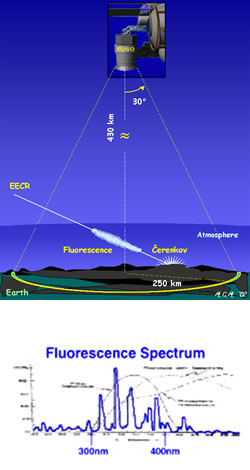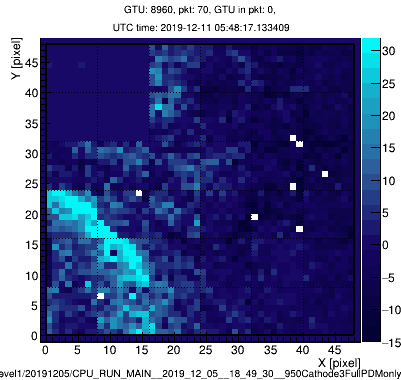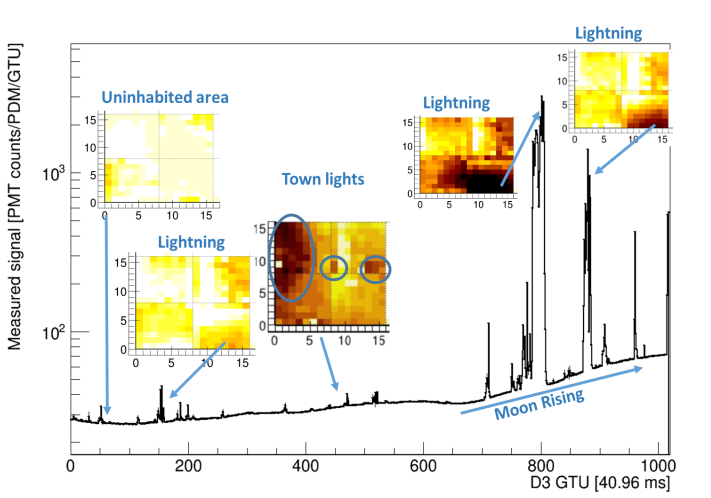Observational Principle

In the JEM-EUSO mission, the UHECR observation is based on the measurement from space of the fluorescence and Cherenkov photons produced in the extensive air shower (EAS) phenomenon. An UHECR, interacting with atmospheric nuclei, produces secondary particles that in turn collide with the air atoms giving rise to a propagating cascade of particles. The number of the secondary particles in an EAS is related to the energy of the primary UHECR. The most dominant particles in EAS are electrons moving through the atmosphere, which excite metastable energy levels in atmospheric atoms and molecules, in particular nitrogen, that return to ground state emitting characteristic fluorescence light in the ultraviolet (UV) band with wavelengths between 330 and 400 nm. The emitted light is isotropic and its intensity is proportional to the energy deposited in the atmosphere. An UHECR-induced EAS then forms a significant streak of fluorescence light along its passage in the atmosphere, depending on the energy and zenith angle of the primary UHECR. Numerous secondary particles have velocities higher than that of the light and therefore they emit Cherenkov photons. These Cherenkov photons are highly beamed within a cone of < 1.3° radius along the trajectory and may be scattered by the molecular and aerosol content in the atmosphere. A part of those photons will be isotropically diffused when reaching land, sea or clouds.
Looking downward the dark Earth atmosphere, the JEM-EUSO telescope will detect such fluorescence light as sketched in Figure. EAS appears as a small disc-shaped luminous object which, when viewed continuously, moves on a straight path at the speed of light. The recorded amount of light is nearly proportional to the shower size at the various depths in the atmosphere. By imaging the motion of the streak every few microseconds, it allows to determine the arrival direction of the primary UHECR. The integral of light recorded is information of importance to determine the energy of the primary UHECR. The cascade shape (especially the position of the shower maximum in the traversed slant depth) gives an indication about the nature of the primary.



